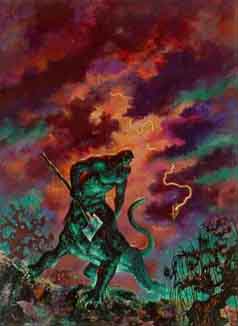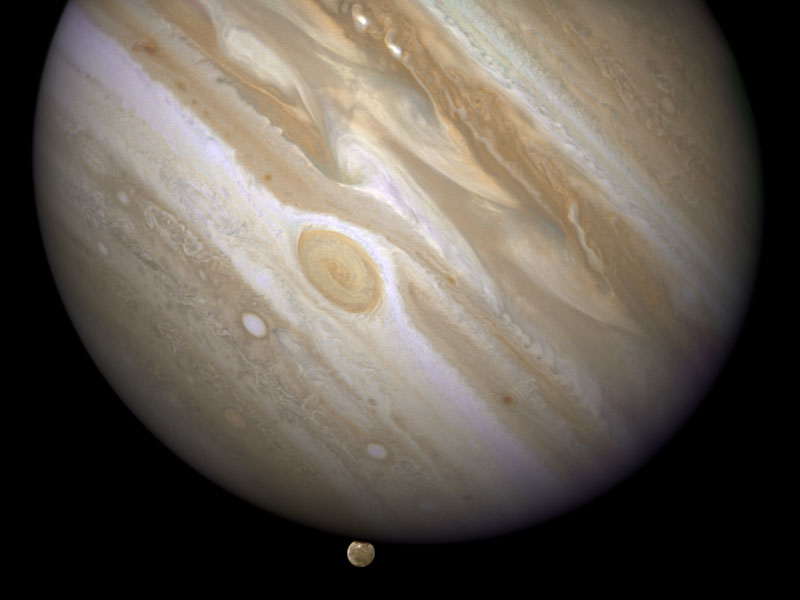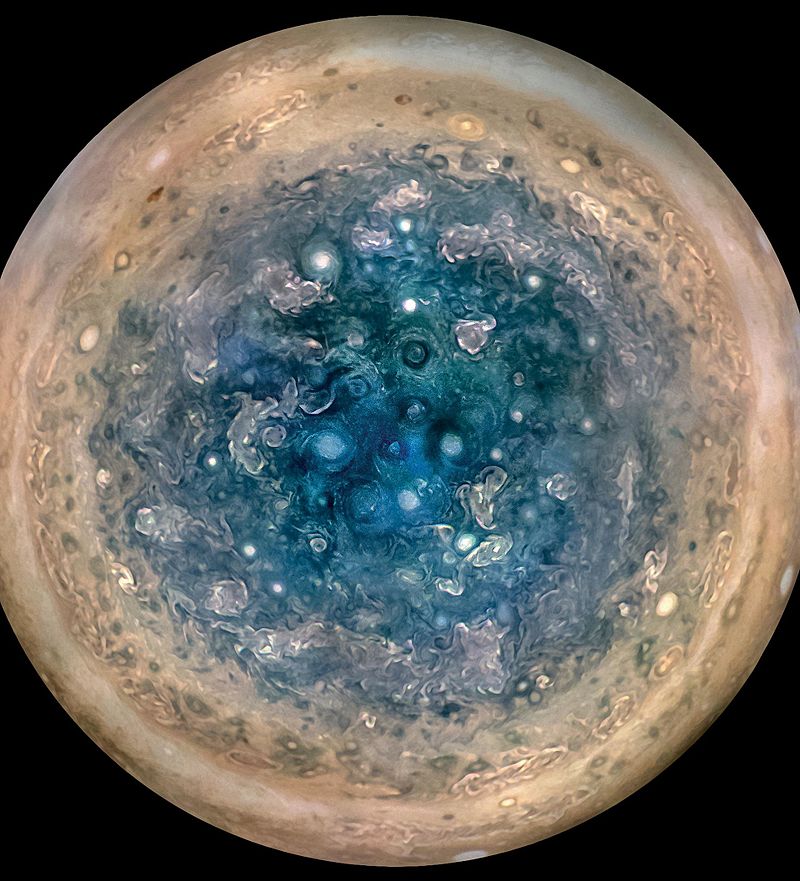

Cloud-gathering Zeus — Homer
Jupiter is the perfect planet to name after a king-god and storm-god. It is a planet of superlatives and essentially a giant ball of storm.
Jupiter is the fourth brightest object in the sky, almost as bright as Venus. As such, it deserves an important god, and was given to the storm gods of the eastern Mediterranean, who were also often the king gods: Marduk, Zeus, Jupiter (or Jove). The Romans identified Jupiter with the Germanic thunder god, Thor, and so Jove's day is Thor's day, Thursday, Jeudi in French, Jeuves in Italian.
Alchemy gives Jupiter the metal tin. That's rather a letdown to modern sensibilities, but I think tin used to have different connotations. Back in the bronze age, tin was a strategic material. Bronze is an alloy of tin and copper, and tin had to be fetched from far-off foreign parts, like the Tin Isles, a.k.a. Britain. When your supply of bronze swords depends on your command of the international tin trade, and vice versa, you can see why tin is a matter for kings. Anyway, the Sun (also very royal) already had gold assigned to it.
Jupiter became important in the scientific revolution when Galileo discovered its four major moons, Io, Callisto, Ganymede, and Europa. To add any new bodies was to shake up the old Ptolemaic astronomy severely, and these appeared to oribit Jupiter (though that was more of an interpretation than an observation), which shook up the old system even more. Galileo, by the way, called the Jovian moons "the Medician Stars," after his patrons, the Medici family. We call them the "Galilean moons."
In older science fiction, written when we thought Jupiter had a solid surface, any Jovians were usually pictured as very formidable creatures, as they would have to be, to cope with the high gravity and enormous winds.

Now, Jupiter is less often given inhabitants. The Galilean moons, which are all planet-sized, have also been popular settings for SF. They look less inviting now, but not impossible.
Several probes have visited Jupiter. Recently, the Juno probe got a clear view of Jupiter's south pole and found it a mass of blue hurricanes:

Before that, there was New Horizons in 2007. The longest mission was the Galileo probe, which orbited Jupiter for seven years, 1995 to 2003.
When I was a kid, Jupiter had twelve moons, and always had. Then they started discovering more. By now, they're up to 66, most quite small. The four big moons are planet-sized. Ganymede is bigger than Mercury.
Io is closest to Jupiter. It shocked astronomers when they saw it through a probe. Its surface is covered with sulfur compounds, spewed there by many active volcanos. The interior of Io is kept hot by the tidal action of Jupiter, which squeezes the moon in a regular rhythm as its orbit takes in closer, then further.
Io orbits in a cloud of plasma that it trails behind it. It is also in a ring of plasma perpendicular to its orbit, running from Io to the north and south magnetic poles of Jupiter, forming the largest electrical circuit known.
The three other Galilean moons are all icy, and probably have seas of liquid water under their icy crusts. Europa, the third out, almost certainly does. And wherever there is liquid water, there may be life.
On to Saturn
Back to Mars
Return to Gallery of Planets
Return to Introduction to Essays
Return to Wind Off the Hilltop
Copyright © Earl Wajenberg, 2012